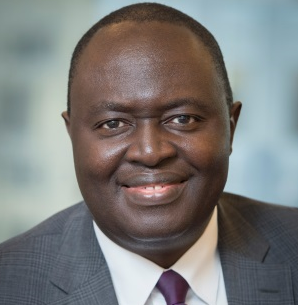Regional Integration in West Africa: The Need to Consolidate Gains

REMARKS BY DIRECTOR GENERAL MOMODOU BAMBA SAHO ON THE OCCASION OF THE 2016 EDUCATION CONFERENCE OF THE WEST AFRICAN INSURANCE COMPANIES ASSOCIATION HELD IN FREETOWN, SIERRA LEONE ON 31 OCTOBER 2016
PREAMBLE
Thank you, President Chief Rotimi Fashiola for your invitation to participate in WAICA’s 2016 Education Conference. And my appreciation also goes to Secretary General Mr. William B. Coker, and to the WAICA membership. Congratulations on celebrating 43 years of successful operations.
We are meeting in Freetown, capital of Sierra Leone, home to a resilient people, and I hope I can now count myself as one of them, who have overcome several crises over the past few decades and still manage to look to the future with strength and optimism. I hope that the future of WAICA is also bright.
I am pleased to have the opportunity to talk to you today about our economic integration project in West Africa. Now is an opportune moment to talk about this as some of the countries in our Community confront serious challenges to their economies posed by the slowdown in global growth and the rebalancing of the Chinese economy and as the rationale for regional integration is being called to question as a consequence of the difficulties that the European project is facing and the backlash against globalization. As economic nationalism gains momentum in Europe and in the United States, it is the right time to reexamine our own project and its relevance in a rapidly changing world.
I will confine my remarks to some of the economic aspects of the integration efforts in the Economic Community of West African States (ECOWAS) with emphasis on the monetary integration aspect which the West African Monetary Agency (WAMA) is mainly concerned with. However, it should be noted that there are other regional integration arrangements in Africa, and that the African Union is supportive of these efforts with the objective of achieving unity at the continental level.
THE JOURNEY SO FAR
1. The ECOWAS economic space is fragmented, with 15 relatively small economies, with a combined GDP that is less than the GDP of a medium sized European country. The characteristics of many of the countries in the region: low per capita income levels, small populations, deficient business climates and high production costs result in small markets and lack of scale economies and do not provide strong incentive for transformational foreign direct investment. For these reasons, it is important that efforts toward integration are accelerated in order to improve the living standards of the peoples.
2. However, regional integration is not just driven by economic considerations. Political reasons can be just as important, if not more so. The European integration project largely started after the Second World War out of a need to prevent another major war by uniting the countries of Europe. The regional integration projects in Africa were also driven by the aspirations of the founding fathers of African independence for closer political and economic integration of the continent to promote African unity, foster self-reliance and enhance collaboration and eradicate colonialism.
3. The West African integration project is one of the biggest and most complex of its kind. It attempts to bring together more than 335 million people in 15 countries, with three different official languages and hundreds of local languages and cultures spread over 5.1 Million square kilometers of territory. All the different national interests have to be aligned toward a common destiny and shared objectives. This requires dedication, mutual trust and tenacity.
4. Efforts at economic integration in West Africa started as early as 1945 following the end of the Second World War when the French colonies in West Africa were brought together to create a single currency with a fixed parity to the French franc. This arrangement, which later evolved into the West African Economic and Monetary Union (WAEMU), is one of the oldest and most stable monetary unions in the world1.
5. Attempts at wider economic cooperation in West Africa were initiated by President Tubman of Liberia, who, in 1964 broached the idea of a West African community. This led to the signing of an agreement between Cote d’Ivoire, Guinea, Liberia and Sierra Leone in February 1965. Progress was, however, limited. The project was given new life when, in 1972, the two heads of state, General Yakubu Gowon of Nigeria and General Gnassingbé Eyadéma of Togo revived the
1An important characteristic of monetary unions is that they have a common central bank which issues a single currency and conducts a common monetary policy. There are four monetary unions: the Central African Economic and Monetary Community (CEMAC), the Eastern Caribbean Currency Union (ECCU), the Euro Area and the West African Economic and Monetary Union (WAEMU). This is different from Dollarisation which has similarities. With Dollarisation, a country adopts the currency of another country, but there is no common central bank. The adopting country accepts the monetary policy of the currency issuing country. Countries using this arrangement include East Timor, Ecuador, Turks and Caicos and Zimbabwe.
